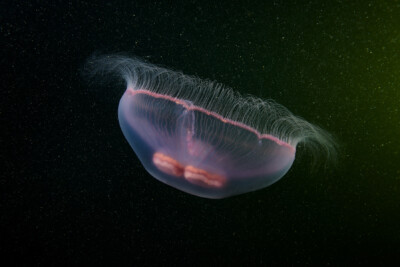european barracuda
| Scientific name | Sphyraena sphyraena |
|---|---|
| Descriptor | Linneaus |
| Year of description | 1758 |
| IUCN category (World) | LC |
| Family | Sphyraenidae |
| Genus | Sphyraena |


Introduction
Sphyraena sphyraena, commonly known as european barracuda, is a salt water fish.
This sheet is currently being prepared. The texts currently proposed come from our data model or are being drafted. To request priority for this content, you can write to us HERE.
Who is it?
Morphology
-
Average size60 cm
-
Maximum size156 cm
-
Longevity10 year
-
Patternvertical stripes
-
Average size60 cm
-
Maximum size156 cm
-
Longevity10 year
-
Patternvertical stripes
How to recognize This fish ?
The european barracuda measures between 60 and 156 cm. This fish is unicolore with a predominantly argent and gris body. The also has noir vertical stripes.
Behaviour & Life cycle
-
dietcarnivorous
-
Sociabilityliving in shoals
-
territorialYes
-
Way of livingdiurnal
The european barracuda hunts in the stalk and is one of the predators of its biotope. Opportunistic, it does not hesitate to attack any smaller animal nearby.
The european barracuda is a fish living in shoals naturally found close to the surface. This species is carnivorous .
The european barracuda is a territorial animal that does not tolerate any incursions into its living area. It is particularly virulent against other territorial species and it can provoke heated fights.
Reproduction
-
Reproductionovipare qui pond en eau libre
The european barracuda is a fish ovipare qui pond en eau libre.
Risks for humans
-
VenomousNo
-
BiteYes
This species can attack if it feels threatened. It is important to be particularly vigilant especially during dives or fishing sessions.
Origin and distribution
Conservation status of populations (IUCN)
What is its habitat?
Natural environment characteristics
-
Temperature14 - 22 °C
-
Depth0 - 100 m
Biotope presentation
The european barracuda is most often found at a depth between 0m and 100m. However, it is not impossible to find this species at other depths.
Species of the same biotope
To go further
Sources & Contributions
Participation & Validation
The Fishipedia team and specialist contributors are committed to providing high-quality content. However, although the information comes from scientific sources or testimonials from specialists, the cards may contain inaccuracies.

Adrien Falzon

Benoit Chartrer
Translation
Translation done with the valuable contribution of our translators, who make this information available to a wider audience. We sincerely thank them for their commitment.
Scientific partners
Tags
Same genus
Species of the same biotope



















